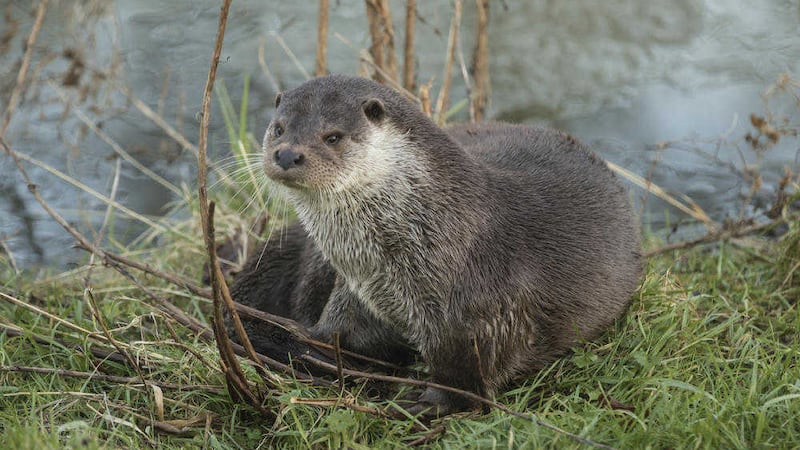DURING a walk over the festive period, through Necarne Estate in Co Fermanagh, I noticed the unmistakable droppings or ‘spraint' of an otter (Lutra lutra) on a grassy mound at a river bank.
These spraints, black, shiny and moist, are found on prominent features such as boulders or mounds and mark out the animal’s territory.
It’s hard to believe that such a well-loved animal was hunted by our early ancestors.
Excavations have shown that otter remains were found in domestic dumps or middens which reveal evidence of what those ancestors ate.
It was hunted both for meat and its highly valued pelt particularly during the centuries that followed.
Classified as vermin in a 1566 British act for its predation of fish stocks, the otter was only given full protection under law in Ireland and elsewhere in recent decades.
Dobharchú is the most commonly used Irish name for the otter, a combination of the two words dobhar and cú, meaning ‘water hound’, in reference to its dog-like appearance and aquatic lifestyle.
Another name used is an madra uisce which translates as the water dog. Dobhrán, also used for the mammal, translates roughly as 'the water thing' or 'water creature'.
Though common in Ireland, the otter is an elusive mammal because of its shyness and often nocturnal movements.
Sleek, lithe and playful and described by Cork poet Billy Ramsell as "a shape of rippling muscle", otters are equally at home on land and in water.
They are especially well equipped for life in water, with streamlined bodies, webbed feet and a tapering tail which acts as an excellent rudder.
They also have dark brown water-proofed fur and the ability to close both their ears and nostrils under water.
Otters eat mainly fish and eels though frogs and birds are also taken.
Their breeding place, a holt, is usually situated underground somewhere along a river bank.
Unlike some other mammals, the otter can breed at any time of the year, though the two or three cubs are usually born in spring.
Most Celtic and other otter folklore characterises the animal as a friendly, helpful creature.
In the eighth century tale of Irish knight Máel Dúin’s voyage to avenge his father’s death, we are told that, on a remote island an otter brought a sailor a salmon to eat.
Another otter followed, bringing "flaming firewood, and set it down, and blew with his breath, so that the fire blazed thereout", enabling the fish to be cooked.
In the story of St Brendan’s voyage, we hear how a hermit "had been fed by an otter for 40 years by the grace of God".
St Cuthbert, patron saint of otters, is said to have had his feet warmed by the animals while standing in cold waters during nightly prayers.
They would also dry his feet with their fur. Tradition has it that a true otter never sleeps and that people who come from otter stock are also beset with this burden of sleeplessness.
My title words are those of 19th century American naturalist, Ernest Thompson Seton. Perhaps it is fitting to finish with his lines: "The joyful, keen and fearless otter: mild and loving to his own kind and gentle with his neighbour of the stream; full of play and gladness in his life, full of courage in his stress; steadfast in death; the noblest little soul that ever went four footed through the woods."








